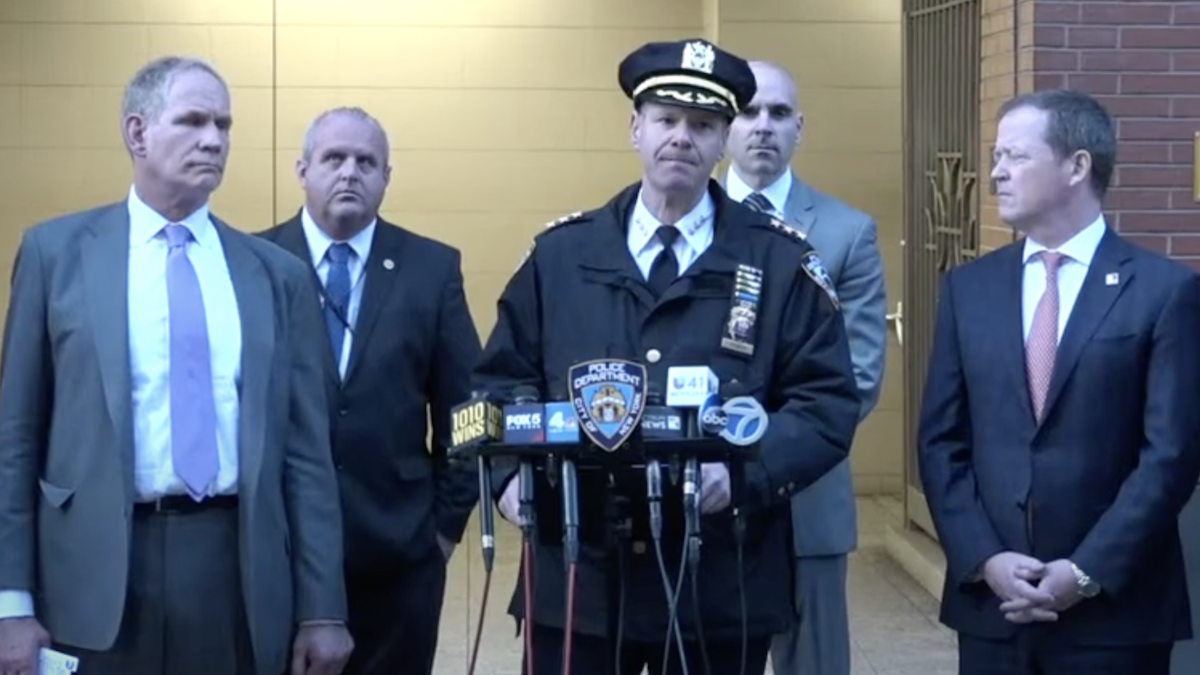Last week, Sen. Tom Cotton of Arkansas gave a speech on criminal justice reform in which he mixed the banal—“Criminals are not victims. Criminals are criminals”—with the fatuous—the United States suffers from an “under-incarceration problem.” He blithely accused colleagues who support reducing one-size-fits-all sentencing mandates, including conservatives like Mike Lee, Ted Cruz, and Rand Paul, of being “criminal-leniency advocates.” The speech cemented the impression one gets that Cotton thinks the only thing standing between the American people today and a crime-ridden, blood-drenched hell on earth is, well, Tom Cotton.
The opposite is true. Congress would be better able to protect the public from violent, dangerous crime if Cotton would stop defending 30-year-old federal sentencing schemes written by Tip O’Neill and George Mitchell. The chief problem with those schemes is not that they produced “mass incarceration” or “under-incarceration,” but rather, they have resulted in misincarceration.
They do not allow federal courts to impose more serious punishments for more serious offenders and lesser penalties for less culpable offenders. Cotton might think one-size-fits-all is the right approach for government-mandated wages, but the consequences for criminal justice are disastrous.
We Need to Focus on the Worst Criminals
If federal sentencing mandates simply resulted in an inefficient allocation of limited government resources, perhaps the effects would not be so frightening. After all, no one expects much efficiency from the government. But the resources at issue here are anti-crime resources, and they are supposed to protect innocent Americans from murderers, rapists, terrorists, drug kingpins, and others who would do them serious harm.
For years, Congress has been stealing money from those on the front lines of that fight to keep nonviolent drug offenders in federal prison, sometimes for decades. Since 1988, Congress has increased spending on federal prisons by 45 percent while slashing spending on state and local law enforcement by 76 percent. This tradeoff is irresponsible and terrifying, since the states prosecute and detain the overwhelming majority of violent felons.
A similarly dangerous tradeoff is taking place at the federal level. The Department of Justice’s inspector general has been warning Congress for years that important, anti-violent crime programs and personnel, like FBI agents, prosecutors, and victims’ services, are being cut to pay for incarcerating drug offenders, who make up half of the federal prison population today. Congress’ misguided priorities have allowed thousands of violent criminals to escape punishment, and denied justice to their victims.
Tradeoffs Are A Real Thing, and Deadly Serious Here
In his remarks, Cotton asked of those who support reform, “How many more crimes will be committed because of sentencing reductions? How many more lives lost?” The answer is: there will be fewer, not more. But since he began by rightly lamenting that “for the vast majority of crimes, a perpetrator is never identified or arrested, let alone prosecuted, convicted, or jailed,” the more immediate question for Cotton is: how many of these crimes go undetected and un-prosecuted as a result of the dangerously misguided tradeoff in federal anti-crime resources you want to perpetuate?
How many murders go unsolved because you insist that someone like Leo Guthmiller serves 10 years in federal prison instead of seven or five? How many rapes go unsolved so we can afford to keep Mandy Martinson in federal prison for 15 years instead of ten or even seven? And how many corrections officers’ lives are you willing to endanger to keep federal prison populations above capacity? (By the way, do you really believe these corrections officers and America’s chiefs of police are “criminal-leniency advocates”?)
Cotton gets these easy questions wrong because he misreads the experts he cites, like scholar James Q. Wilson. Whereas almost all criminologists agree that the swiftness and certainty of punishment is more important than severity, Cotton focuses on severity. He does so although Wilson believed “resource constraints”—like a limited federal budget—sometimes make severity the enemy of certainty. Failing to apprehend so many dangerous offenders because we hammer the nonviolent ones we catch undercuts the certainty of punishment. Wilson was right, and Cotton is wrong.
In the end, we should reject the false choice Cotton and other opponents of reform present: keep all of our current policies or risk a new crime wave. Such demagoguery ignores the American experience. We can learn from the mistakes of earlier periods, use the tools many states have discovered to reduce both incarceration and crime, and enact commonsense reforms that actually make us safer. We can get tough on crime instead of just talking tough.









